It’s nearly impossible to watch a travel related show or follow any agave loving person on social media without hearing “go to Oaxaca, it will change your life.” A good friend, and fellow artist, has been going to Oaxaca for years and has always said with confidence that she knows I would love it. Her intoxicating way of describing the colors, creativity, and craftsmanship of Oaxaca had me dreaming of what it must be like. Yet I rarely take someone’s word on a destination, cautiously skeptical, I need to see things for myself. Wanderlust and a never-ending curiosity drive my passion to travel. This insatiable curiosity brought me to start thinking about Oaxaca. I’ve probably dreamed about visiting a thousand times. Each time only to wake somewhere else. In 2019 I turned the dream into reality and booked a flight with no clear plan, only to be forced to cancel.
In late April 2022 I woke to the sound of church bells. For a moment I wondered if I was still dreaming. Then I smelled fresh tortillas and could hear faint laughter and conversation, in Spanish, occurring downstairs. I sat up so fast it was more like jumping out of bed. A bell rang announcing breakfast and at a long family table (made of old sewing tables) I met the other people, later dubbed the Good Vibrations Team, who were part of the trip of a life time. We were all there for a shared purpose as guests of Wahaka Mezcal, at the hotel Ofrenda, brought together to spend Earth Day planting baby tobala as part of a reforestation project. I was finally in Oaxaca.
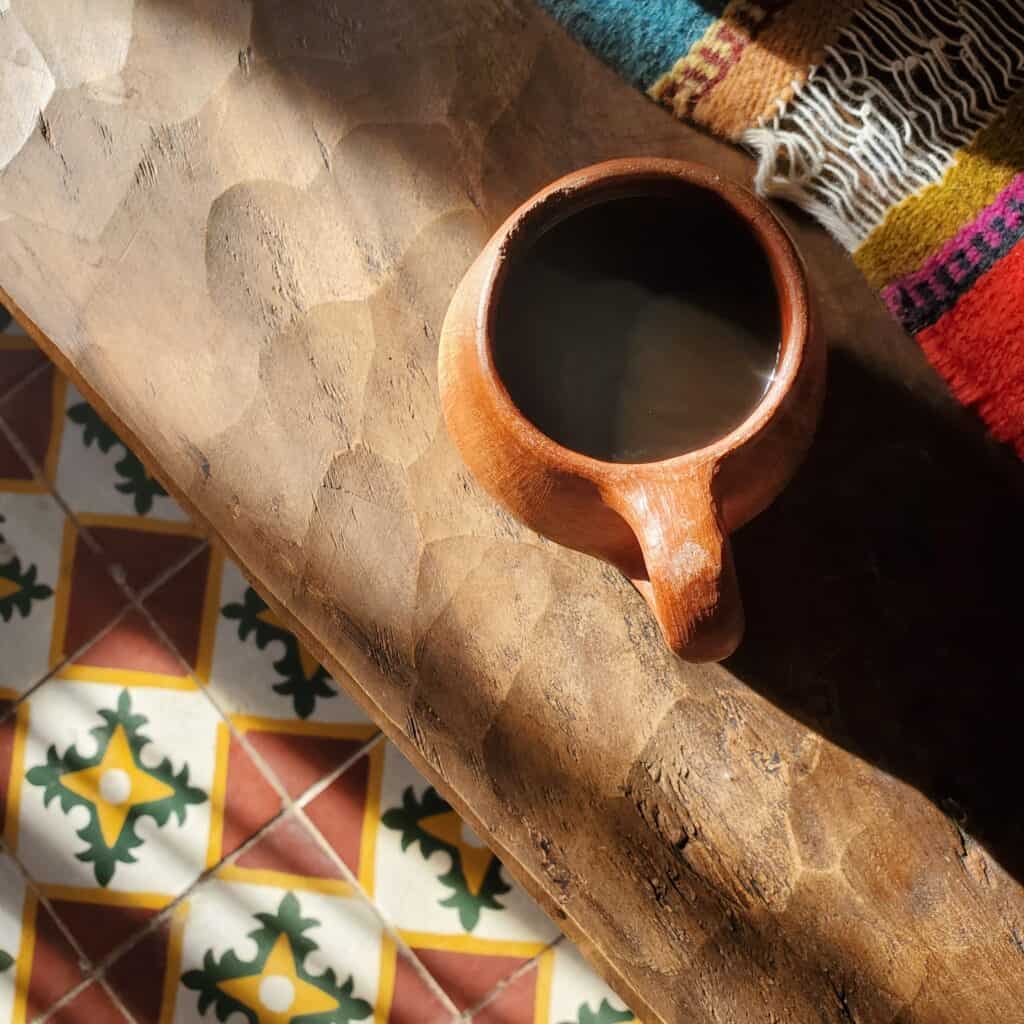
For the past 7 years Wahaka Mezcal has hosted a one-day reforestation project on Earth Day in honor of agave. “I came up with this project with the idea of raising awareness about the true value of agave. These are not only used to make Mezcal -or tequila- but they are also very old species that are difficult to harvest. Unfortunately, the project was canceled in 2020 and 21 due to the pandemic,” said Eduardo Belaunzarán, Lalo to friends, Managing Partner of Wahaka Mezcal and Mezcal Brand Ambassador of Oaxaca State. He added “The reforestation project is an event where we invite volunteers to work with us. People pay their own flights and accommodation to come help. In short, they offer us a day of their own vacation to help mother nature and give back to the earth what they drink so passionately. Wahaka takes advantage of the occasion to invite a very limited number of people from the industry. As a small family business, we cannot afford to bring many.”
Our group was about 15 people from a wide background and various countries, most from the US and as far away as France and Spain. A well-rounded mix of young bartenders and bar managers, agave aficionados, restaurant owners, and hotel food and beverage directors. I have been on several industry trips sponsored by various brands and each time is a different mix of people. Sometimes I connect easily with only a few, but on this trip we all got along from day one. Lots of conversations were had in the bus between stops. Perhaps it was the common love of mezcal, or just that we were sipping it continuously? Sydney Smith, restaurant manager of Yeyo’s El Alma de Mexico in Bentonville, Arkansas (largest mezcaleria in Arkansas and a James Beard semifinalist) shared with a big smile, “Of course, the mezcal, so much mezcal, and to think this whole trip was centered around it. One might think that mezcal is a spirit that brings all different kinds of people together. I most definitely believe that this trip has made my love for mezcal more pure, more real.”
But first, visiting palenques
Before we even hit the fields to get our hands dirty planting the tobala pups, a small group of us visited three small palenques (distilleries) around San Dionisio Ocotepec who were the producers of mezcal El Güel. They distill their production once and then Wahaka finishes the second distillation and bottles it. These producers are friends since elementary school of Wahaka’s 5th generation master distiller Alberto Morales, Beto to friends. If you have never been to a palenque it can be hard to describe. Think rustic and rudimentary, often looking like they resourcefully put it together with scrap material. It reminded me of my grandmother, who made the best food on an old stove using nothing but instinct and experience to measure when the meal was ready. High tech equipment isn’t necessary to make mezcal, it’s a labor-intensive process using the simplest of tools. The sweet smell of cooked agave, straw, earth, and wood burning all swirl in the warm air. We were given small bites of cooked agave to try, it’s very sweet, a little sticky, and reminds me of tamarind. The mezcaleros seemed eager to show us their process and sample their mezcal, from simply marked plastic jugs They were delicious.
“We were delighted to see the traditional operations and capture some images that spoke to us while observing the amazing process of creating artisanal agave spirits.” Shared Shawn Pedro Padilla, owner of restaurant Mission Cantina in Seattle along with his wife Tina, who was also on the trip. “We listened intently as the mezcaleros explained their process and watched the distillation come off the copper still. Not only did they share tastes of their mezcals but also, for many of us, the 1st experience having tejate.” A bit labor intensive to make, tejate is a corn-based beverage that includes cacao, with other ingredients dating back to pre-Hispanic time. In fact, most of the delicious food and beverage from Oaxaca could all be described as labor intensive to most Americans standards. It’s that detail oriented, attention to detail and tradition, that makes Oaxaca so special, and delicious.
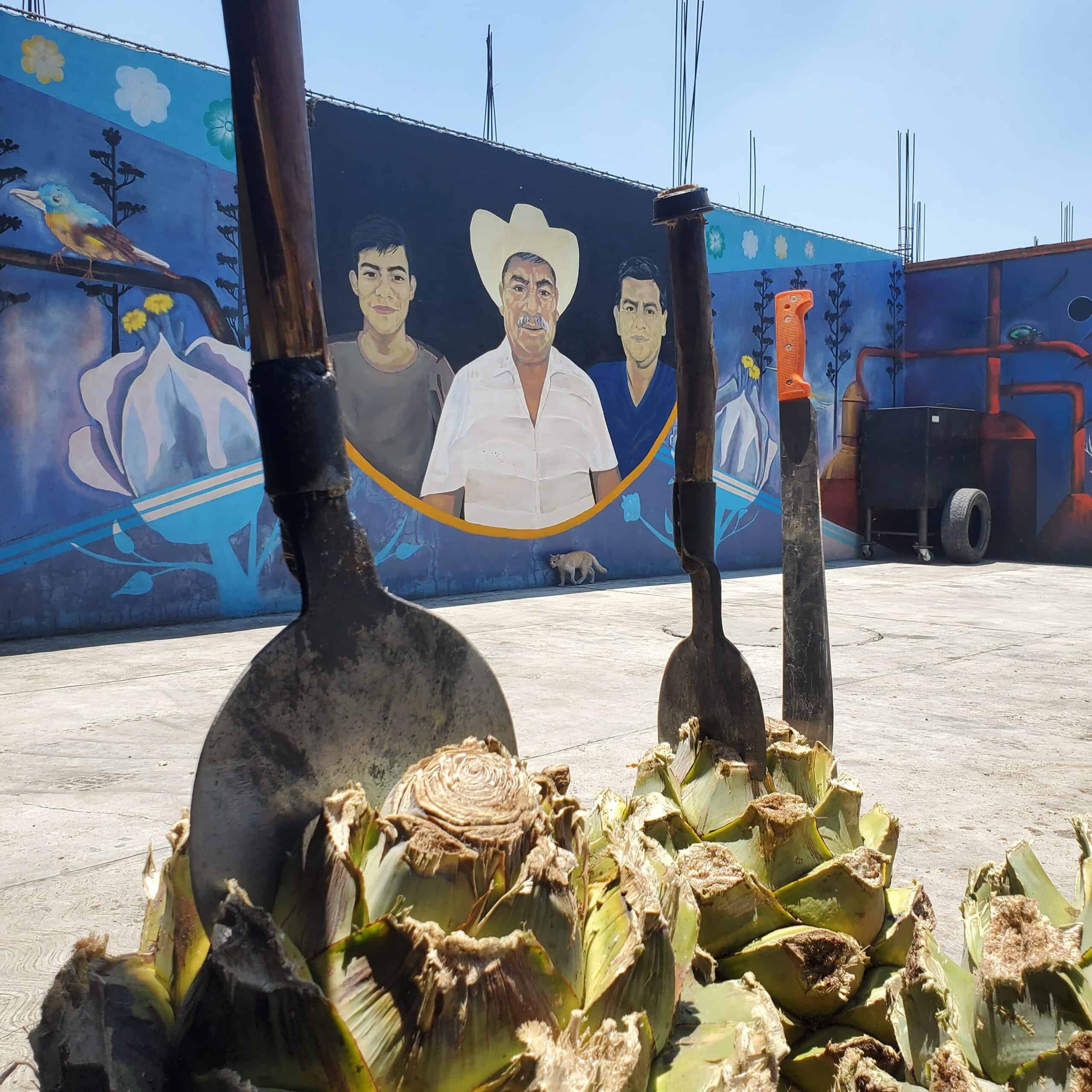
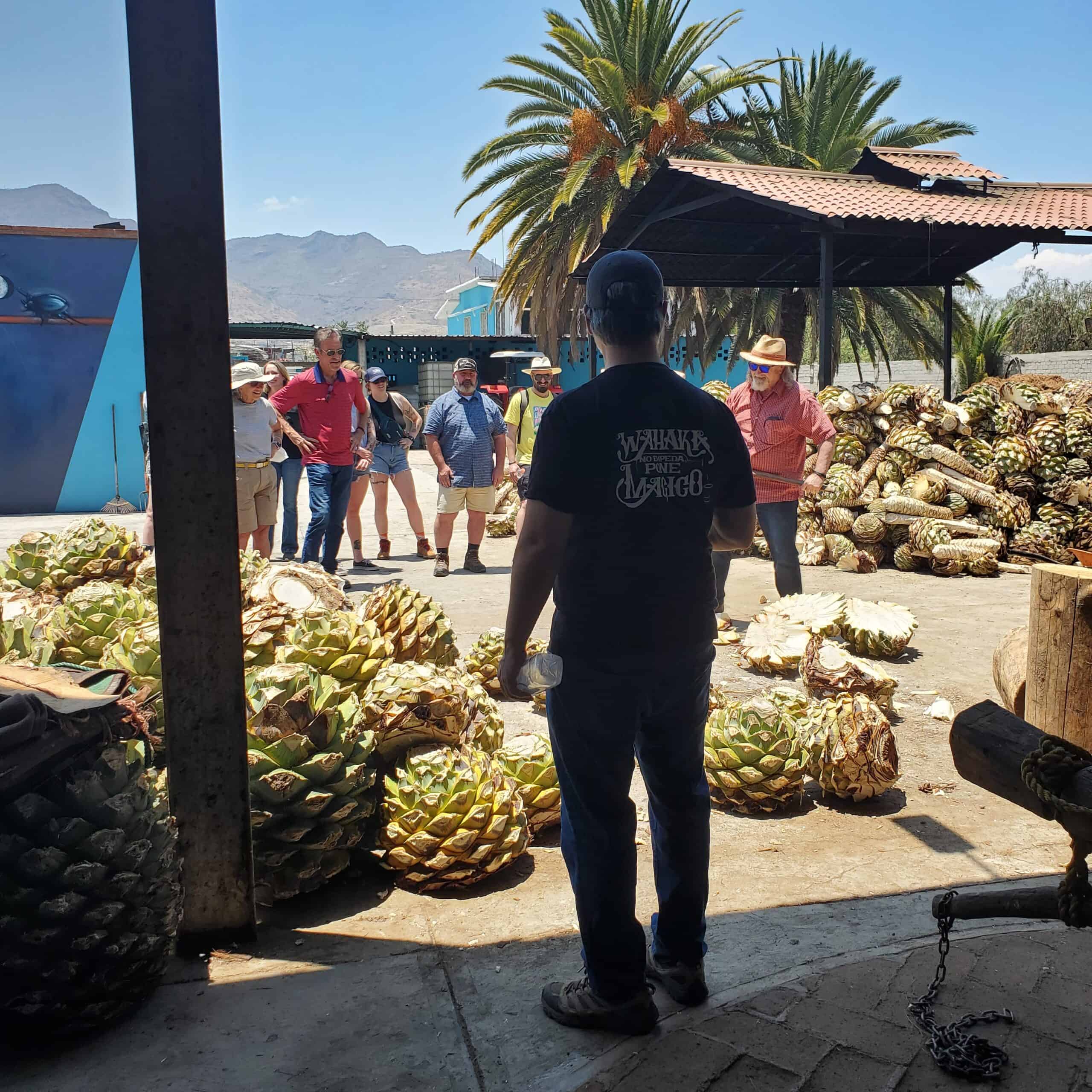
Side note, food
And man did we have a chance to eat. Aside from breakfast to get us going, there were highlighted dinners showcasing the traditional and unique flavors of Oaxaca. One night we were treated to a seafood focused rooftop dinner at our hotel. Well executed despite the wind, and served family style, the conversations flowed as easy as the mezcal. Another dinner was a delight for the senses at Los Pacos with a tasting and explanation of seven definitive moles of Oaxaca. Your entrée featured your chosen favorite, no small task. There was even an opportunity to stretch your legs with a brief tour of their dedicated mole kitchen (and even purchase to take home). The most whimsical meal was at the very fun vibe Cantina Xicatana Mezcalera. Food was served in carnival like mini vessels. Tacos hung from mini clothes pins on a mini clothesline, churros in miniature food trucks, even tableside mini Jenga, card games, and of course karaoke.
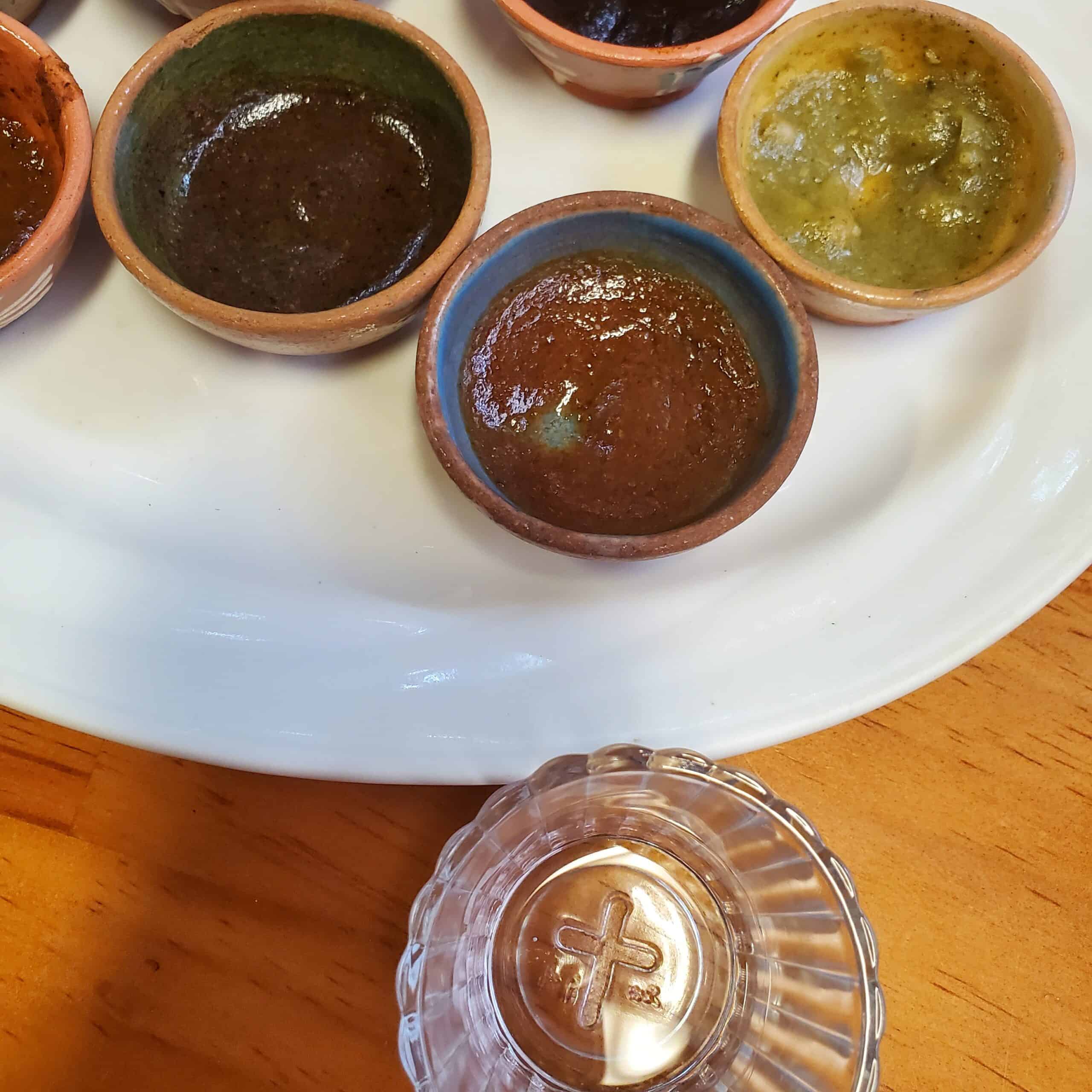
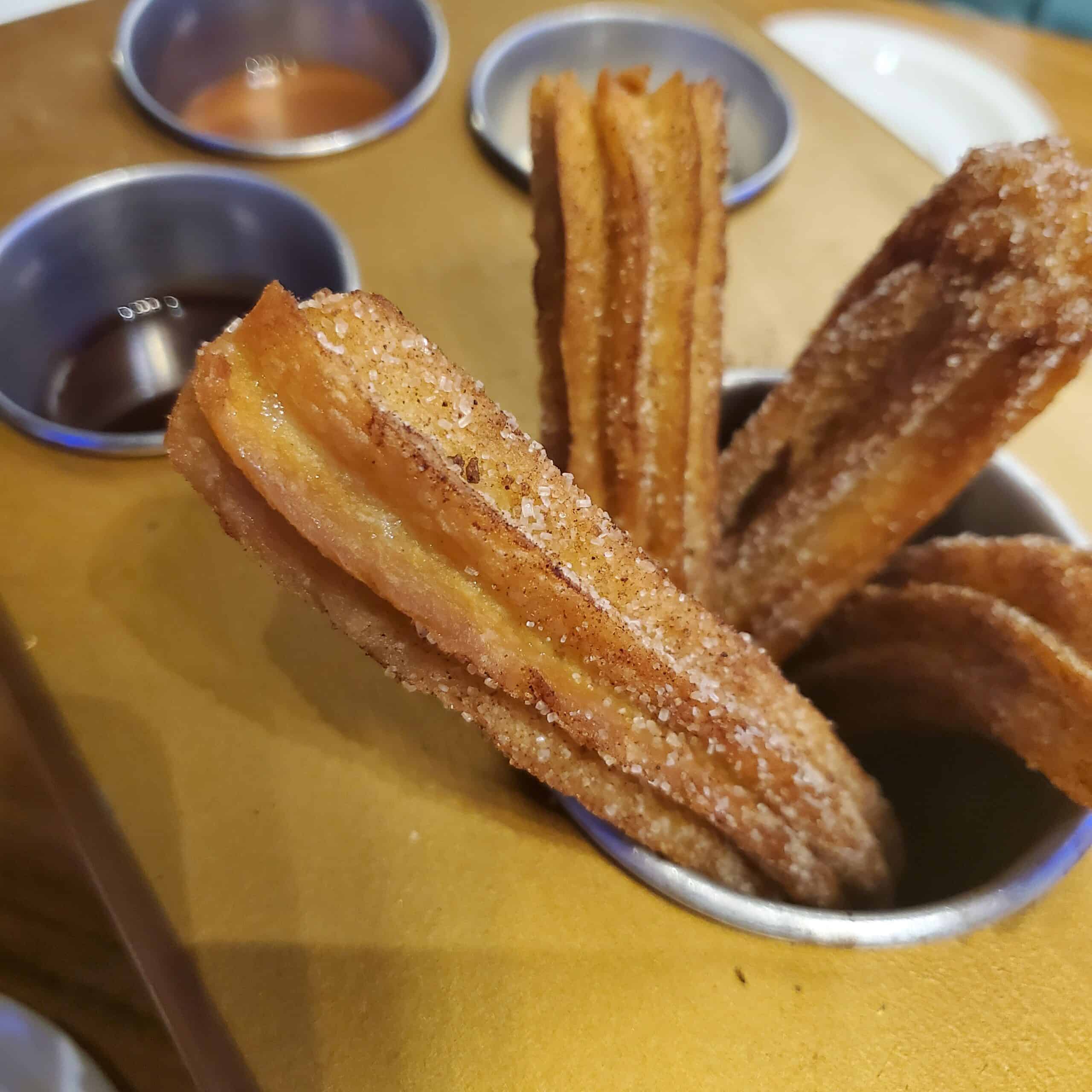
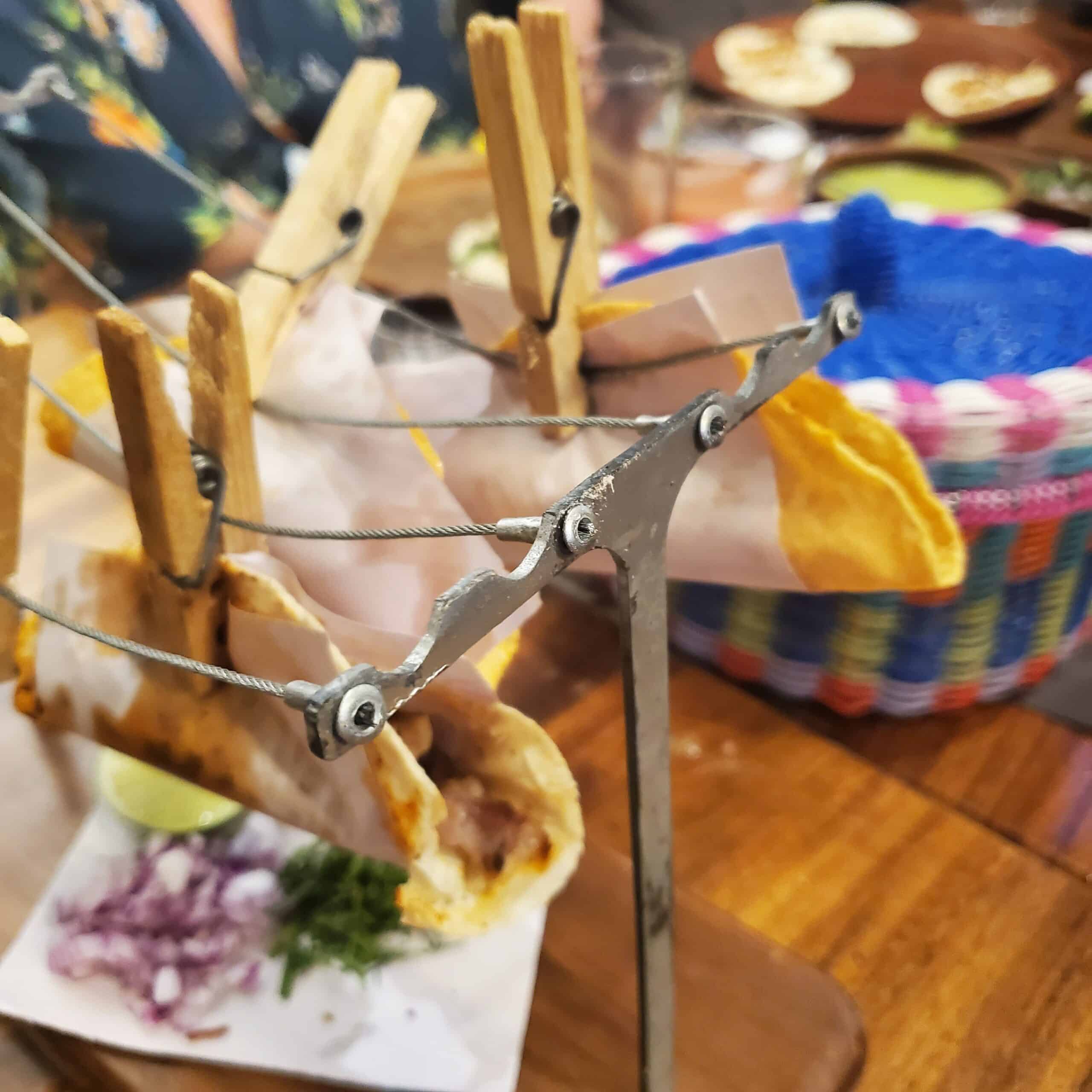
Our second day began with breakfast, fresh fruit and juice (mezcal if you wish), and coffee. Then we were back in the van for the drive out to see the Wahaka palanque and a chance to not only meet Beto but see the entire process from start to finish. Their facility is much larger than the 3 we visited the previous day, but much smaller in comparison to the tequila distilleries I’ve been to. I’m impressed how well organized they are and how many bottles they can produce with the space available. What I think we all enjoyed was not only being shown the process but actually being put to work. Yes, enjoyed. It’s one thing to see a process, but when you actually get your hands dirty you appreciate just how much hard work goes in to making mezcal. I’ve been to several tequila production sites and it feels awkward to just watch people work. This isn’t a tourist destination, it’s a job site, someone’s livelihood. By helping out we could get to know the workers better and experience how labor intensive making mezcal is. As we arrived the workers had already built an ocote (pine) wood fire in the earthen pit and it was time to stack the piñas (harvested agave plants trimmed down to the core). Today they were roasting an ensamble comprised of espadin, madrecuishe, and tobala. While the workers, and some of our group, made stacking the piñas look easy, this girl isn’t used to lifting much more than a taco.
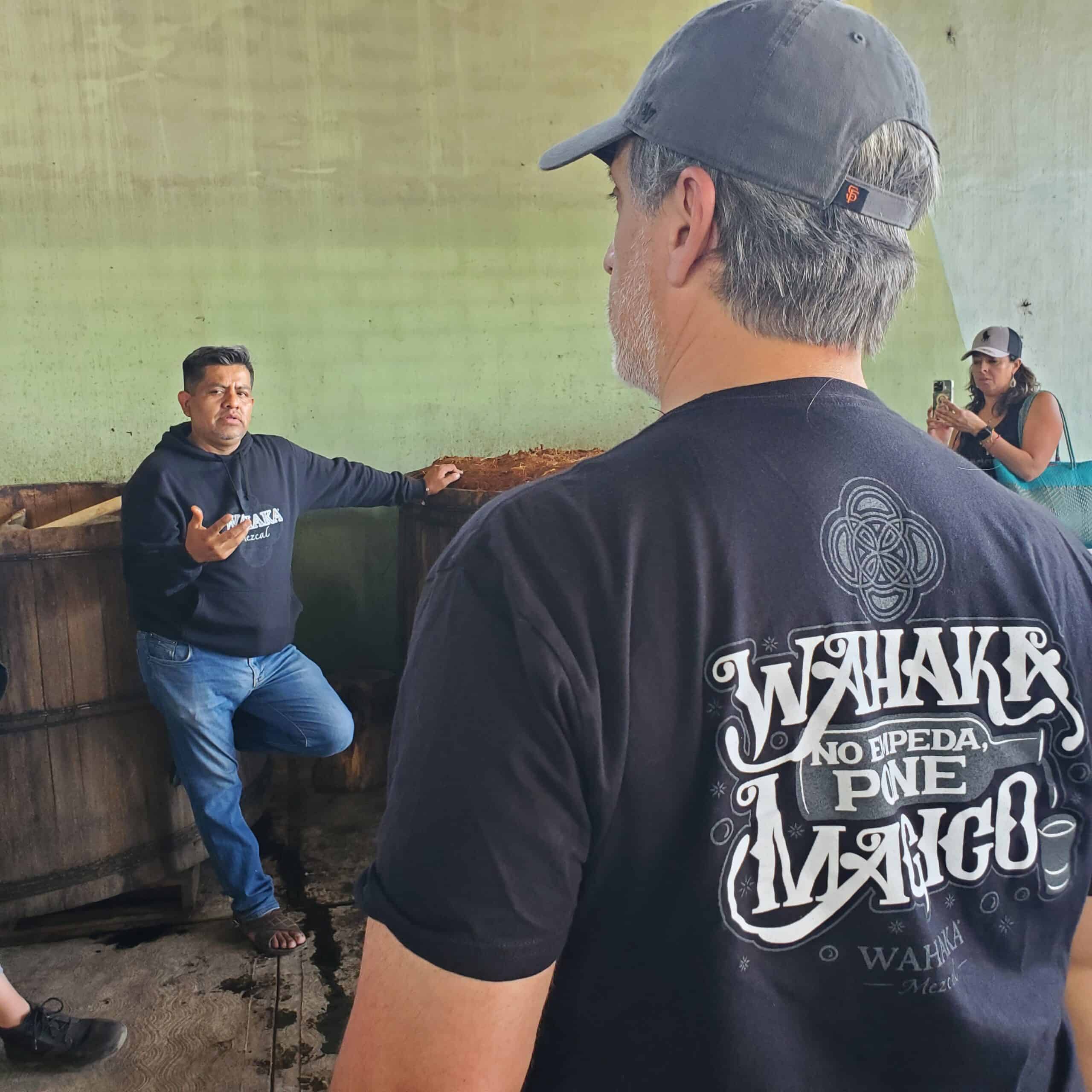
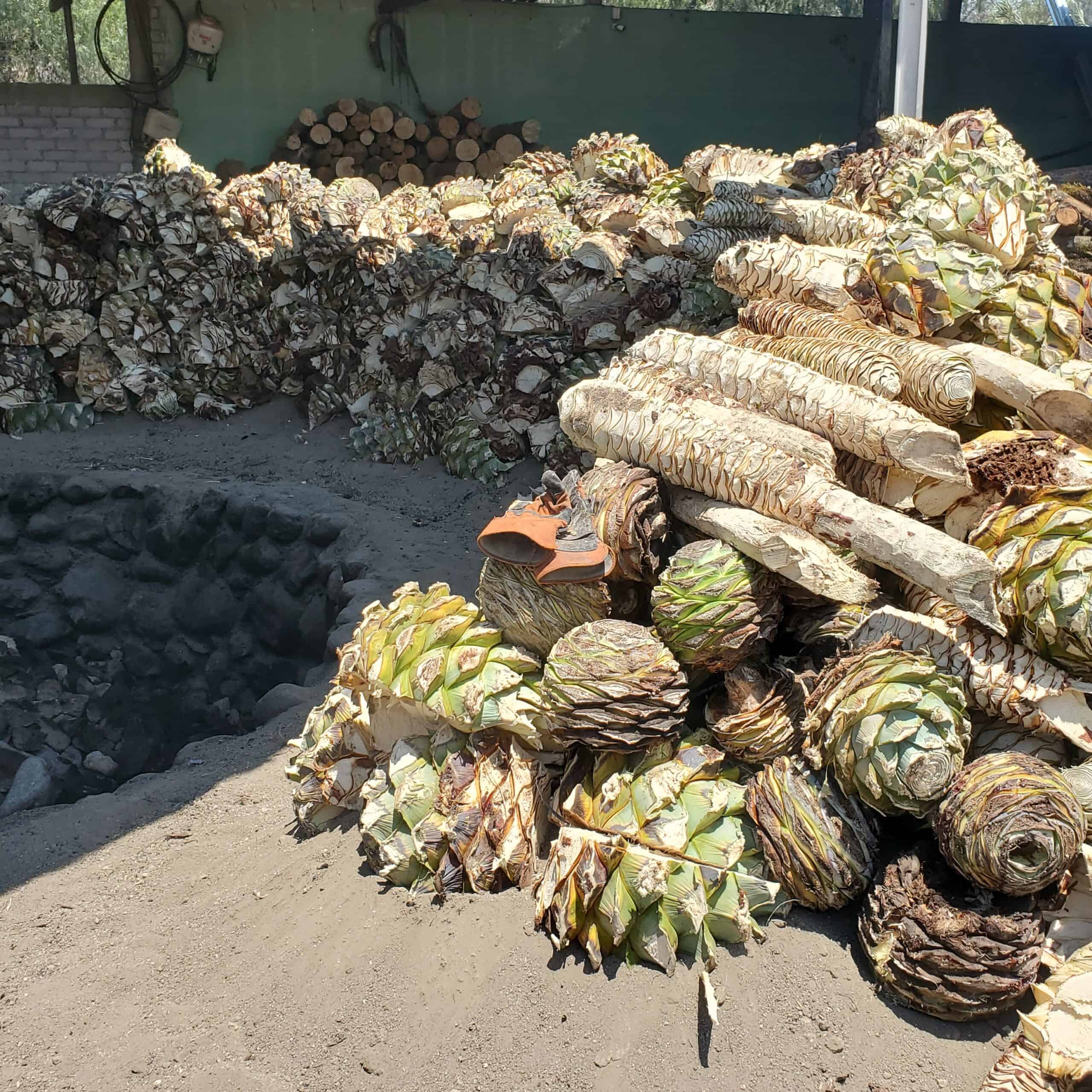
Planting Tobala
After a free day to explore the Centro we all retired early with a reminder to meet at the church steps by 8am prompt. As we arrived at the Wahaka Palenque we were greeted with even more volunteers, some of them neighbors. There was a true sense of pride in the community for the day’s planned activities and smiles were shared despite language barriers. First up, getting the traditional barbacoa started. Barbacoa is delicacy of layered meat, vegetables, and spices slow cooked in a large pot lined with green leaves and buried it a pit fire, covered then topped with dirt to create a steam oven. It’s considered a blessing to have a guest lay the 1st piece of meat into the hot pit. This was a big crowd pleaser, as well as knowing what awaited us at the end of the day. The picturesque scenery of the Oaxacan countryside is full of fields of vegetation leading to the mountainous background. I wanted to take a picture of everything and hope it did the beauty justice. We drove up into the mountains, followed by the truck carrying pups to be planted. Once we arrived people divided into teams and alternated digging the holes and carrying the little tobala up the hill. It was hot, steep in spots, dry, with loose gravel. Appropriate shoes were helpful, as were gloves, those babies have spikes! After a few hours the group successfully planted at least 500 pups. Proving the event has gained in popularity over the years as more people take an interest in mezcal and sustainability.
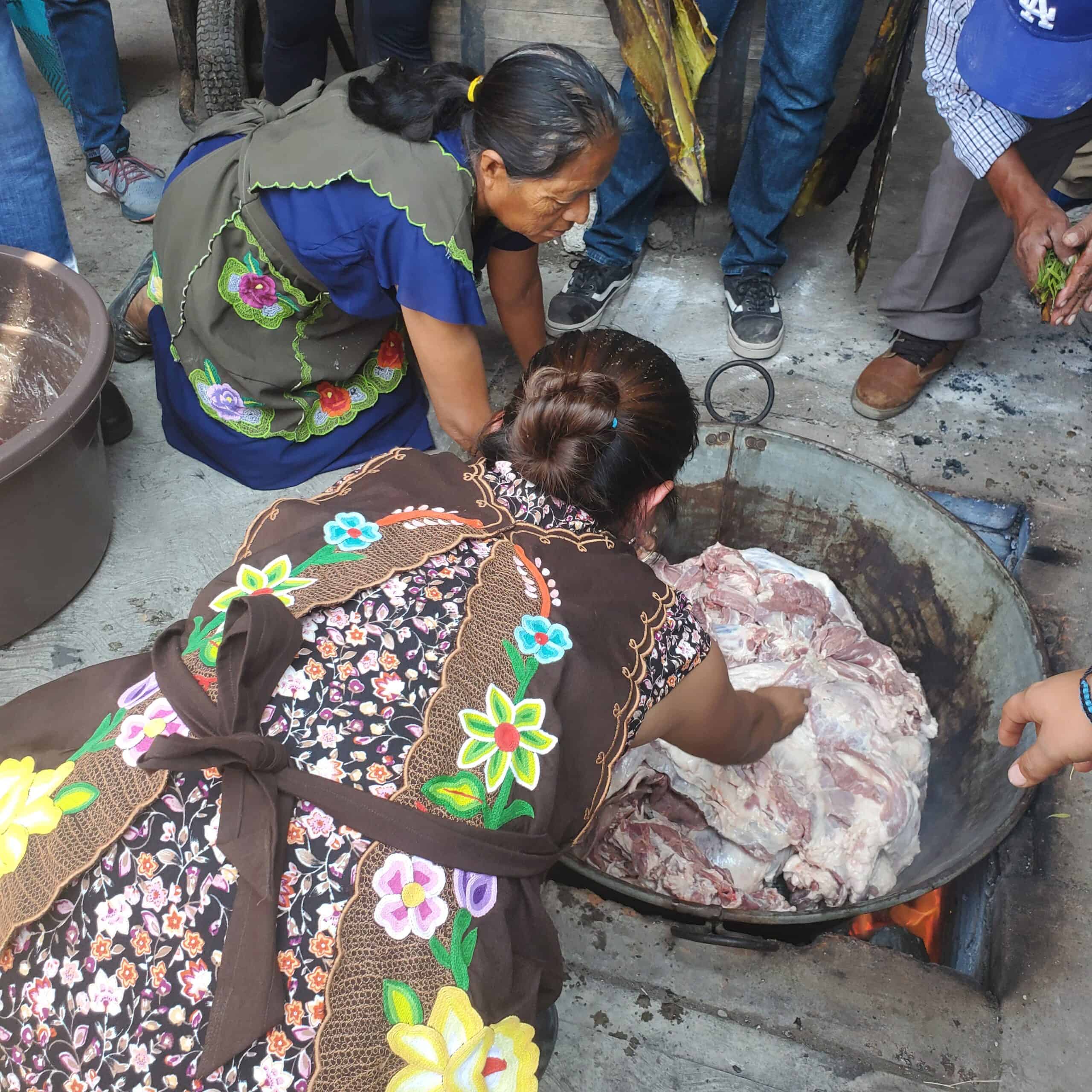
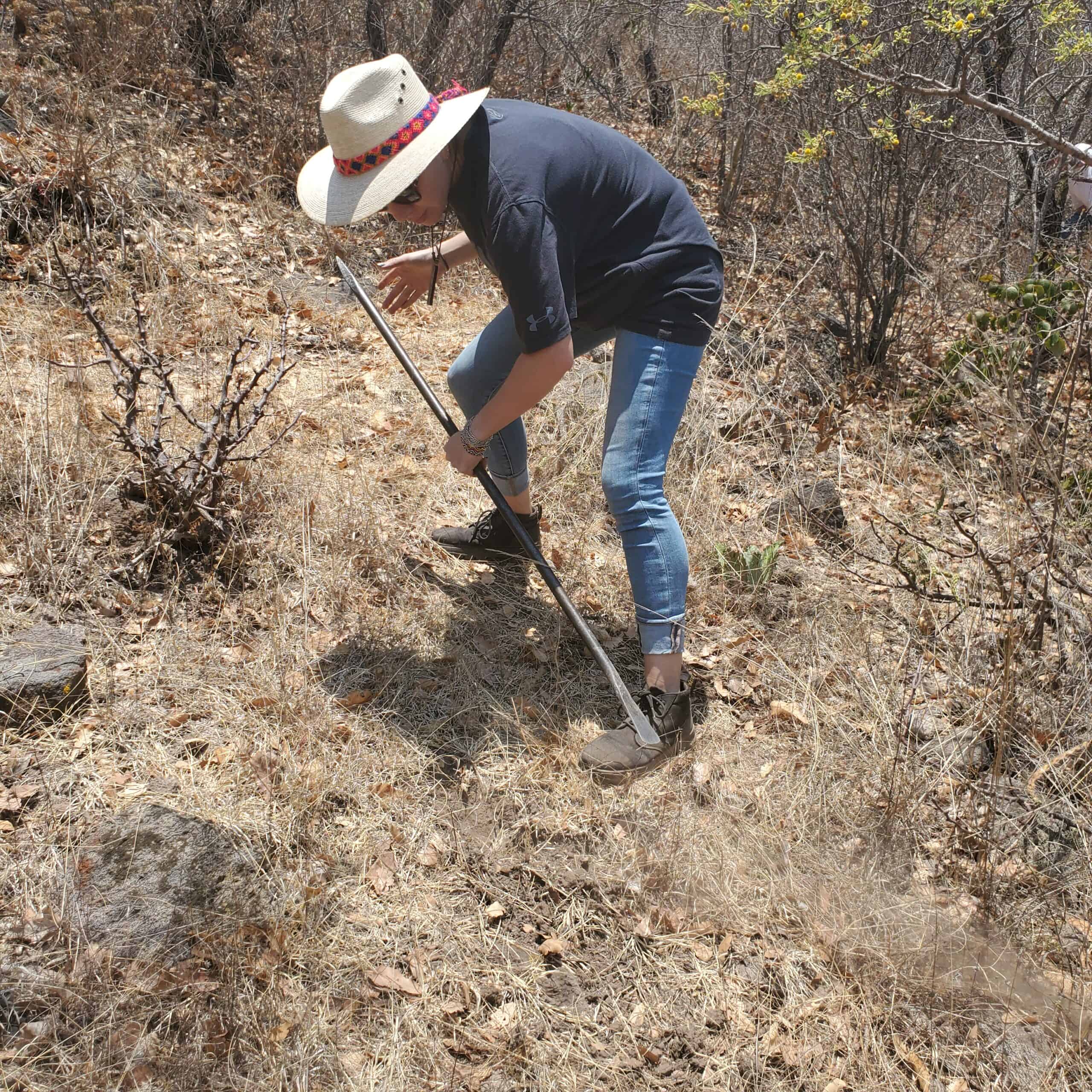
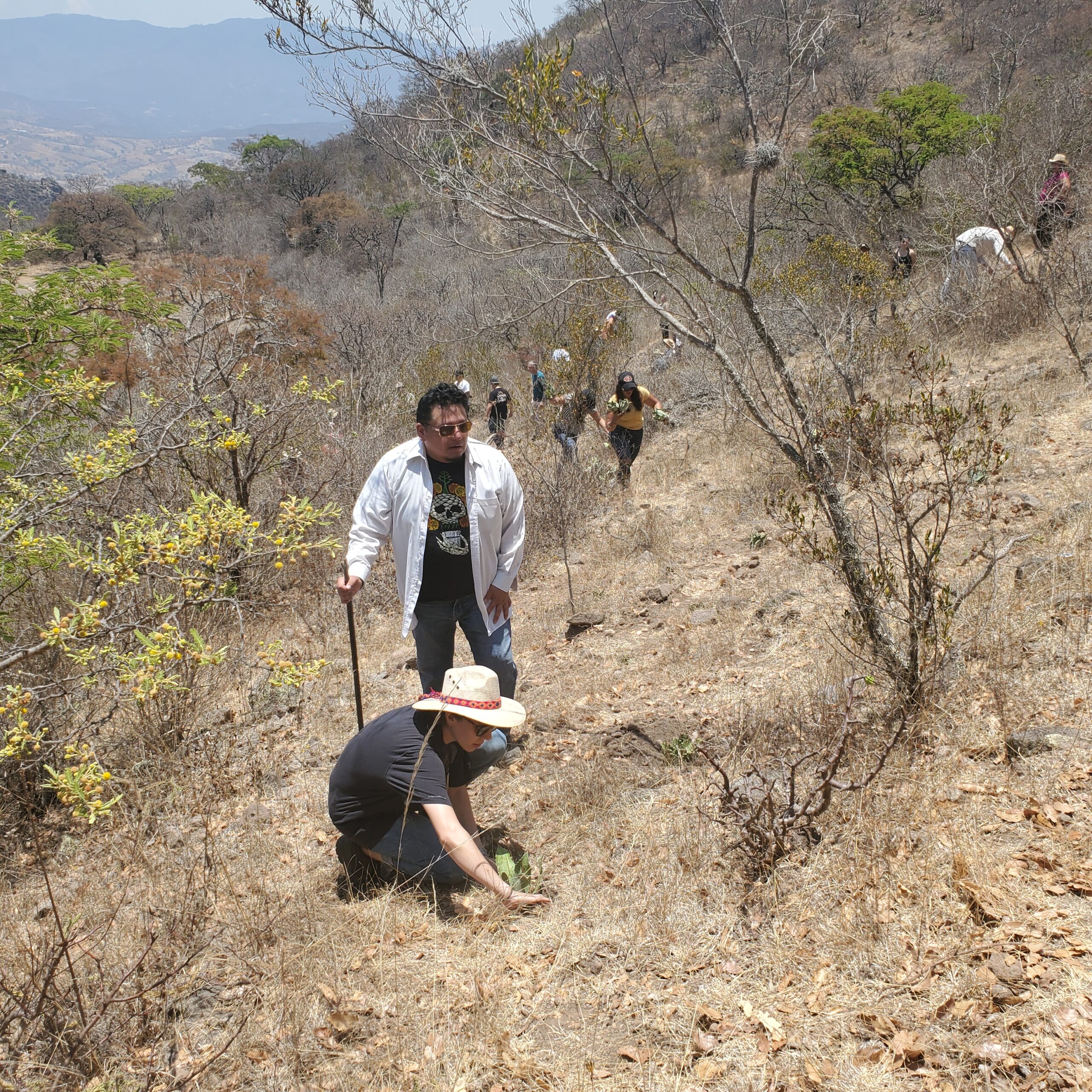
According to Lalo the first time it was a very small team, “we had a lot of work and fun, we reforested only two dozen Agaves. In 2019 we had more than 50 people and we planted more than two thousand agaves. This year’s number seems similar”. He added, “The idea is to create a conscience about the long period that an agave needs to grow, the difficulty in harvesting them, and the true value of these spectacular plants. Our goal is to plant 4 agaves for each harvested.” The tobala we planted won’t be ready to harvest for at least 12 to 15 years, depending on weather. After completing the day’s work, we were treated to tamales and more tejate, while resting in the shade. Our hosts shared with us their appreciation for our time and what it means to the future of mezcal. Beto conducted a blessing of the land now planted. The drive back to the Palenque was much quieter, a few naps were had. Tired but content that an unspoken bond occurred and friendships have been forged while sweating and dust covered.
We arrived back at the Palenque to the now finished barbacoa. All the parts were used to make a feast of soup, blood sausage, and big chunks of meat. Not to mention plenty of mezcal bottles passed from table to table, a common theme on this trip. A final communal cheer and it was time to say goodbye to the Morales family.
I could say the ride back to the hotel was even quieter, but our bus of Good Vibes was just getting going. Our tolerant bus driver cranked the music and a bit of a dance party / karaoke ensued. Once back we were on our own to explore, most of us stayed in small groups and continued to check out the vibrant scene of restaurants, shopping, art galleries and street vendors.
Is it a cliche if it is true?
As a frequent traveler I often feel torn sharing how magical a destination is. If I do there’s that fear it will be overrun by tourists and changed forever. I suppose some of that has already happened without my input. It’s important to recognize beauty without asking it to change for the convenience of outsiders. Yes, I appreciated the WIFI and that most of the restaurants and gift shops took credit cards, but that’s not why I travel. I hesitate to share too much as I don’t wish to be part of a cliché.
I will share two moments I felt most connected to Oaxaca. The 1st was at a private small brand mezcal tasting in a room that felt more like a place of worship then a tasting room. With no windows, or cameras allowed, in a soft voice we were guided to not describe the mezcal by flavor notes but to open our minds and allow feelings to form words. The group of seven participants took turns sharing what came to their minds. It was extremely emotional and I don’t think I was the only one to cry. The 2nd was a trip to the Hierve el Agua, a natural wonder formed by travertine rock formations. The fresh water springs are over saturated with calcium carbonate forming what appear to be petrified waterfalls. A woman walked out to the edge for a photo wearing a black flowing dress, matching her beautiful flowing long black hair. In the few moments she stood there a large black bird appeared from nowhere and landed next to her. It seemed to be admiring her as much as people were. It was magical to everyone. It seemed the whole pool went silent and into slow motion. Watching them look at each other like two lost soul mates. Someone said it must be her spirit animal as they seemed like old friends from another time.
I definitely wasn’t the only one moved by Oaxaca. “I came on the trip to grow my overall knowledge of Oaxaca,” reflected Smith “This wasn’t only a trip to learn more about Wahaka mezcal. It was a trip to learn about the culture, the art, the food, and the amazing people and community that make it all up. I went into this trip with absolutely zero expectations. I think it’s best to go into most things in life that way, you can truly be amazed with what you experience, oh and I most definitely was amazed. Seeing and being a part of the entire process of what all truly goes into this creation was magical. the food, the art, the culture, the mezcal.” To say we were well taken care of would be an understatement. Not just our plates and copitas were kept full, but our hearts were left bursting, new friendships were forged, and a heightened awareness of the complex beauty of Oaxaca is ingrained.
There are as many adjectives, and colors, to describe Oaxaca City as you’d find in the jumbo size crayon box. The murals around every corner in the Centro alone could entice a short walk to the corner café into a whole day of exploring. Yet, I’m well aware they were not put there for any tourist’s superficial selfie opp. I didn’t get the impression the people of Oaxaca were trying to intentionally create an image, or even impress anyone. The hard work and passion they put into the food, textiles, art, and mezcal isn’t for show it’s their culture. There is a deep value to tradition that can only be found in places where the people pass down their skills to their children, show humble pride in their work, and offer a stranger true hospitality. My long-awaited dream came true, it was more than I’d hoped for, and as much of a cliché as it might sound, “Go to Oaxaca, it will change your life.”


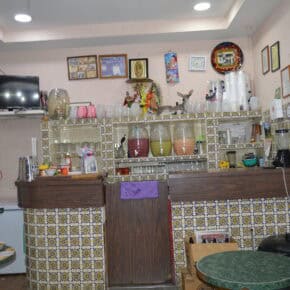
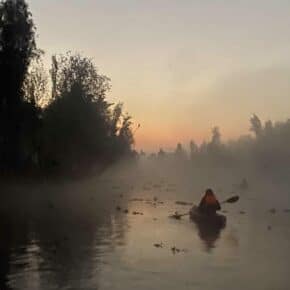








Michelle,
Wow you really captured it all in one writing. This was an amazing trip that I’ve struggled to tell the story but you did a wonderful job here. Thanks for taking the time to tell the story. I can’t wait to do it again!
¡Salud!